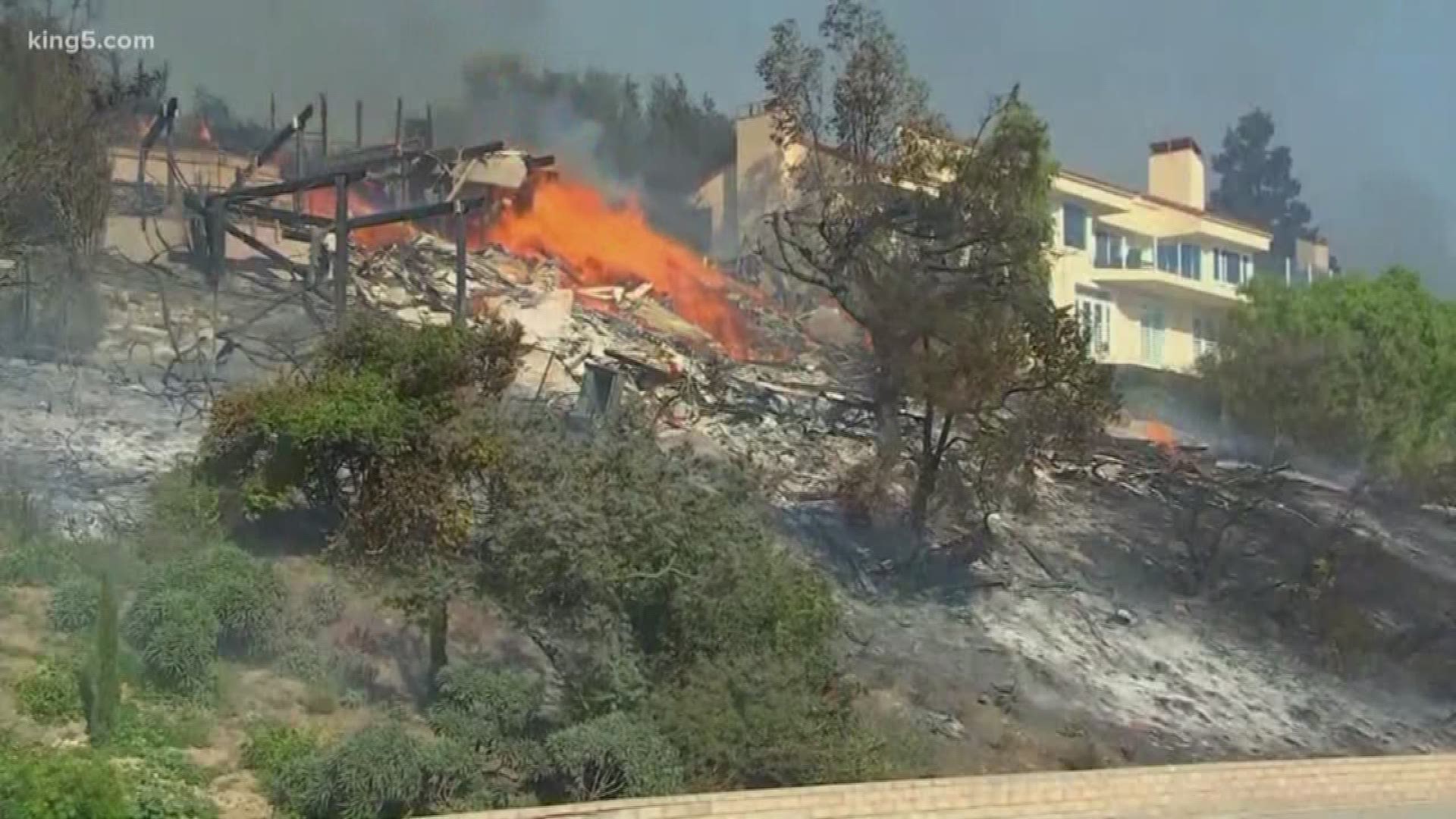If you think major wildfires in Washington are just for the eastern half of the state, think again.
In a meeting room at the Tulalip Resort Casino, wildland firefighters, climate scientists, emergency managers, and others gathered Monday for a conference called “Managing Western Washington Wildfire Risk in a Changing Climate.”
“The risk is going up, and there’s a real need to better understand what’s going to happen,” said Amy Snover, Director of the University of Washington Climate Impacts Group, and University Director of the Northwest Climate Adaptation Science Center.
Western Washington and Oregon have seen massive fires in the distant past. The 1902 Yacolt Burn in southwest Washington held the state record until 2014. The Yacolt burn complex accounted for more than 1 million acres lost, where fire traveled 30 miles in a day and a half.
Fires of that size are considered rare in Western Washington, but when they get going they wipe out entire forests.
Josh Halofsky, a research scientist for the Washington State Department of Natural Resources, has studied not only the Yacolt Burn, but signature remains of other fires dating back centuries.
Usually, fires of that size begin late in a very dry summer, and once there’s an ignition source either by lightning or from humans, supercharged and very hot winds from the east can pick up the fire and drive it quickly westward.
It’s not unlike the Santa Ana and other winds that have caused the massive, devastating fatal fires in California over the past two years.
Consider the following from Crystal Raymond, an Adaptation Specialist at the Climate Impacts Group.
By 2040, the median annual burned area in the Northwest could more than double what we saw from 1916 to 2006. Climate change could lead to more east wind events, but those events may not be as strong as in the past. The number of “very high” fire danger days on the west side of the state will increase.
It’s all blamed on average air temperature increases of 1.8 degrees, less summer rain, and earlier snowmelt.
The bottom line, according to the Climate Impacts Group, is that forest fuels are drier, the number of fires is increasing, and those results are human-caused. That information is confirmed on the ground as we see more fires, and even bigger fires, in Western Washington.
“We responded to 1,800 fires this year, and 40 percent of those fires were in Western Washington,” said Chuck Turley, Division Manager for Wildfire for the Department of Natural Resources.
Much of the concern for Western Washington is about getting the population educated.
While people who live with fire in Eastern Washington expect it and know the risks and how to deal with it, many on the wetter western side of the state think this side is free from large fires.
Then, millions of people moved and are expected to move to the state who have no experience with wildfires.
“Certainly, we need people to be educated and aware, where they perceive there is no risk and that’s not the case,” said Snohomish County Emergency Management Director Jason Biermann.

